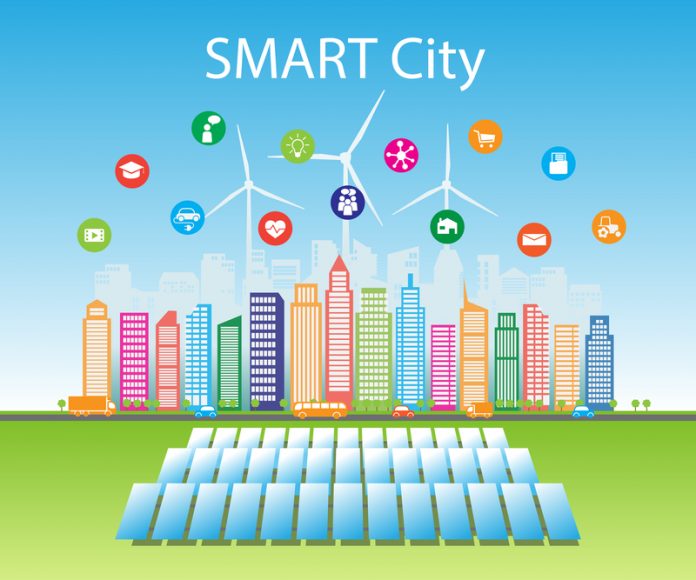Smart cities have the power to transform the lives of its citizens and the environment, but the reality is that they will only ever be efficient if they are built on a fast, reliable and widespread 5G network
The smart city is a concept that requires collaboration between both the public and private sectors and its citizens in order to allow for the promised transformation and growth. The big difference with the fifth-generation network is not just the potential high speed but also reduced latency, which for a smart transport system will enable more efficient, real-time interaction between transport systems, such as road traffic management and maintenance systems, through to interconnectivity between road users and automated public waste collection services.
A strong and reliable digital infrastructure is critical in driving the uptake of connected and autonomous vehicles (CAVs), particularly for local authorities and transport operators for whom the sharing of data is fundamental to understanding user needs and requirements of services.
The urgency for a green transport system is higher than ever and cities – where 70% of global C02 emissions originate – are the priority. As urban mobility transforms into one where EVs are mainstream, CAVs are commonplace and digital vehicle connectivity deepens, the boundaries between private, shared and public transport will become blurred and there will be a wider variety of clean, cheap and flexible ways to travel.
A new analysis of urban mobility has suggested that seamless mobility could be cleaner, more convenient and more efficient than the status quo, accommodating up to 30% more traffic whilst cutting travel time by 10%.
Whilst we can see that the uptake of CAVs and EVs play a crucial role in the smart city of the future, the challenge is that they have significantly different charging requirements. A move towards decentralised energy is critical to maintaining an effective and fully connected smart infrastructure. Preventing energy from being generated and distributed where the power is needed – primarily in cities – will lead to ramifications far beyond our transportation system.
If, for example, we assume that any existing grid can adequately support thousands of EV owners plugging in at the same time, we are being very short-sighted, and overlooking a very real risk of brownouts and energy shortages and that’s even before we start looking into the impact of Connected Autonomous Vehicles (CAVs).
Smart city developers and integrators are in for a period of adjustment, but localised energy suppliers need to ensure that the new infrastructure is not built on a foundation of sand. Priority must be given to strengthening energy infrastructure, which is already struggling to adjust, in order to meet the demands of tomorrow.
In a bid to accelerate the drive for a smart sustainable future, three things are clear; the onus on the integration and adoption of EVs should be first on the priority list for both private and public sector; secondly, that this EV evolution is central to how our smart city infrastructure develops and runs in the years to come; and lastly, that we are still a far cry from establishing a localised energy solution that will meet even the most basic demands of this evolving electric vehicle (EV) and connected autonomous vehicle (CAV) infrastructure.
Shared mobility may be in its infancy, but it’s one trend that is set to benefit from CAVs and will have a major impact on reducing congestion and pollution in UK cities. Real-time data transfer has the potential to transform the efficiency of the UK’s lagging public transport systems by responding to the demands of the smart city population in real-time. Spending on public services has never been under greater scrutiny, but investment in these emerging technologies will raise the barrier to improved productivity and in turn unlock cost savings.
Our transport, energy and communications networks are becoming increasingly and inextricably linked with developments in the built environment, and a cohesive UK-wide strategy is vital. Cross-sector collaboration between government, the utility sector and wider industry are essential to ensure the UK continues to grow and flourish in the emerging brave new sustainable world. The vision should be to make the UK the world leader in infrastructure development to support our future transport needs.
At the moment, the government’s approach is vehicle-led – or in other words, consumer-led – and this means we’re all reacting to market forces rather than collaborating together to achieve a national strategy.
Chris Evans
Deputy Managing Director











